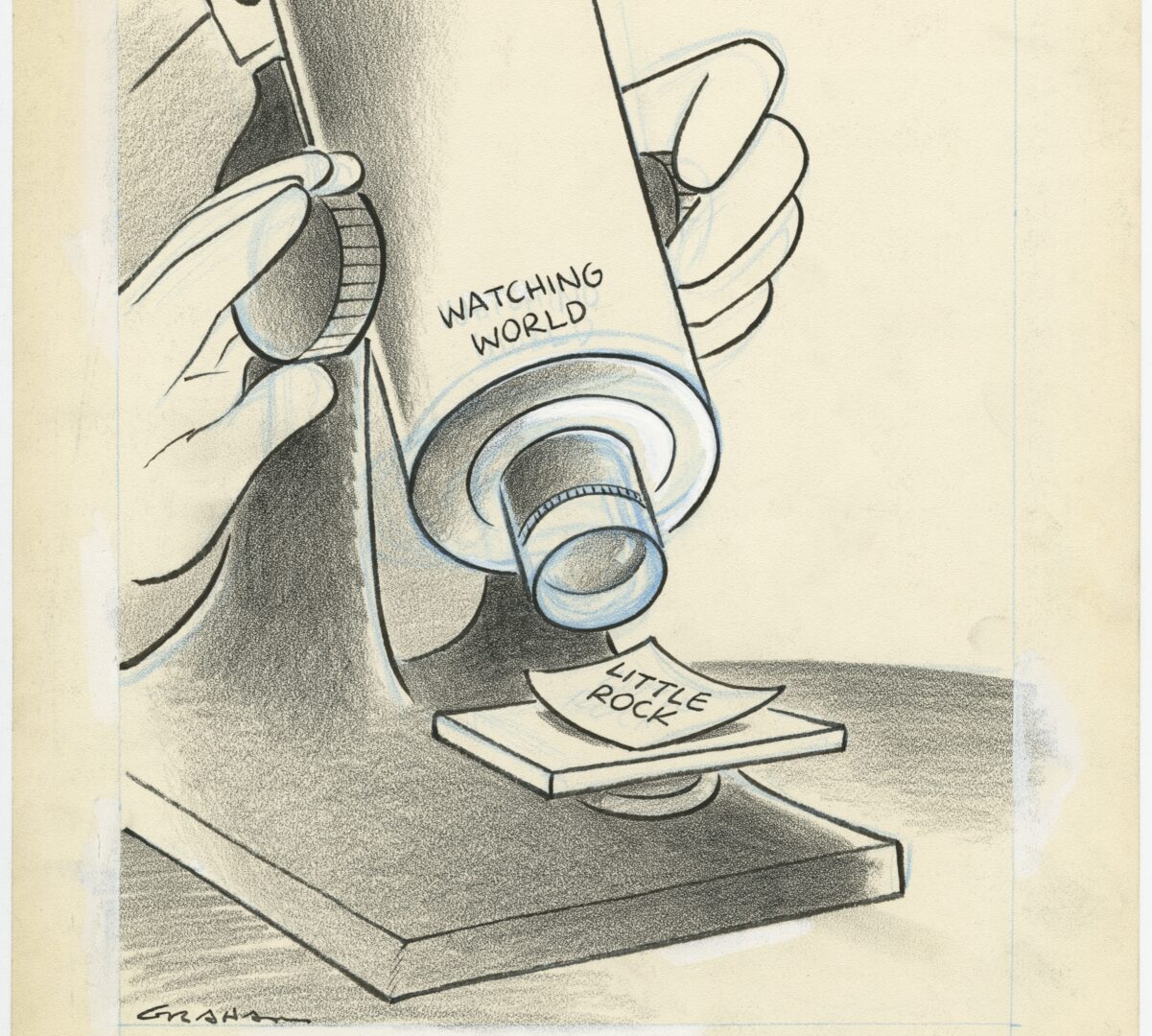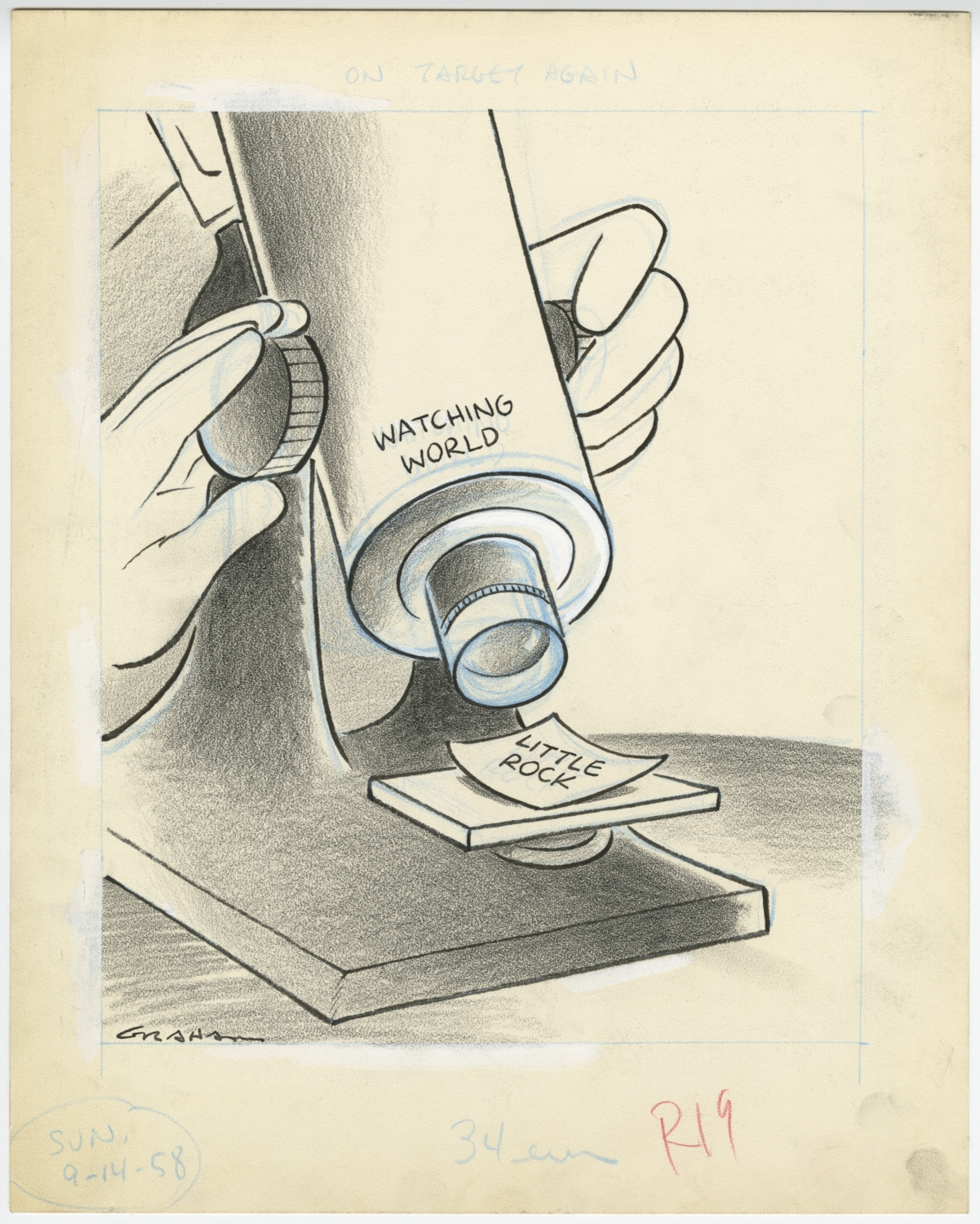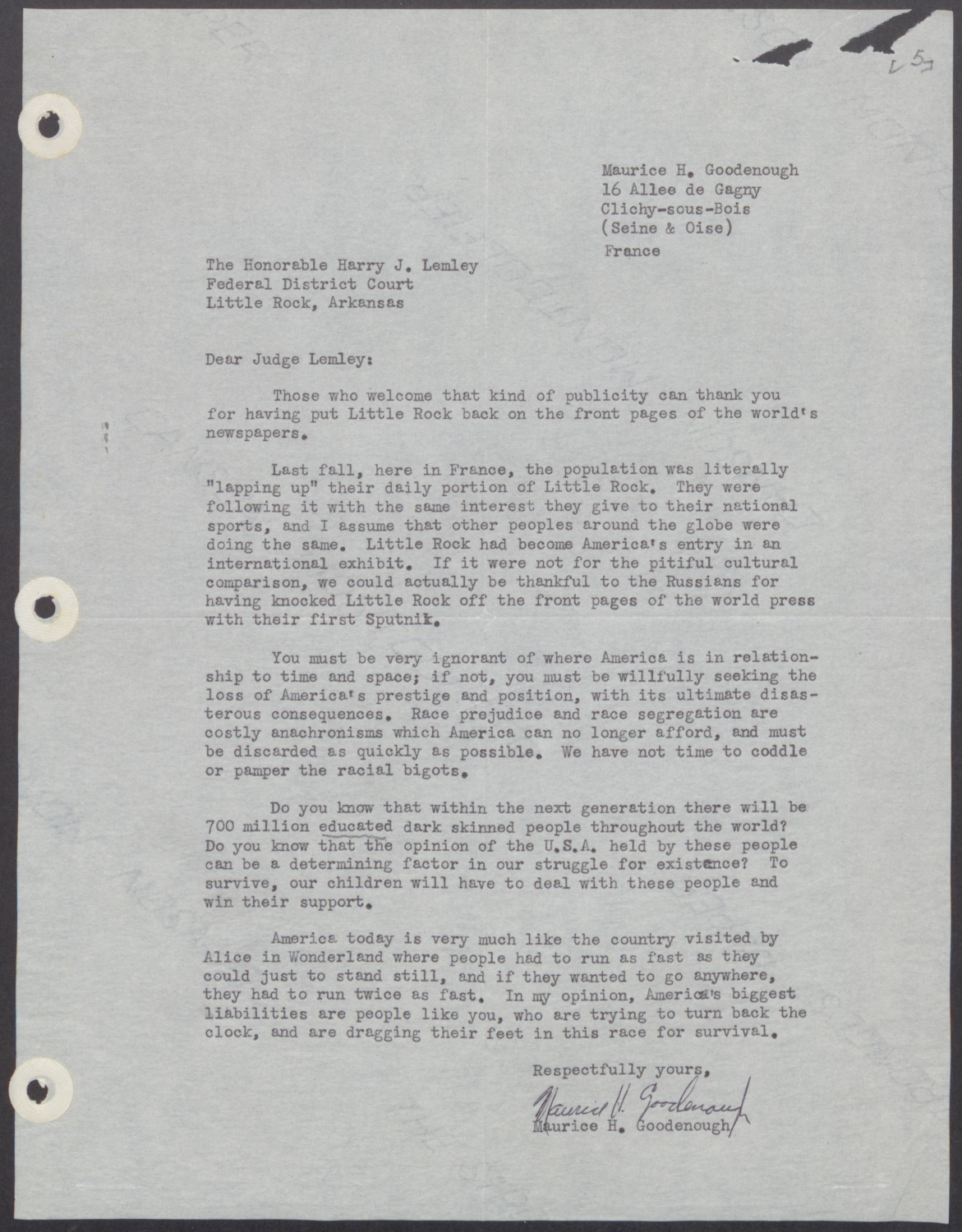Little Rock Makes Global Headlines (Again!)
Introduction
In the fall of 1957, nine African American students attempted to enter Little Rock Central High School. A white mob gathered around Central High to prevent them from entering the building. The nine African American teens – known today as the Little Rock Nine – were the first non-white students able to enroll in Central High after the 1954 U.S. Supreme Court’s decision in Brown v. Board of Education declared segregation in schools to be unconstitutional.
Following Brown v. Board of Education, in 1955, the Little Rock school board accepted a plan of gradual integration presented by superintendent Virgil Blossom. According to the plan, Little Rock schools were to begin the integration process in the fall of 1957. However, when the nine African American students wanted to exercise their right to attend Central High, Orval Faubus, the Governor of Arkansas, sided with the advocates of segregation. He called the Arkansas National Guard to prevent the students from entering the school building. In response to this violation of federal laws, President Dwight Eisenhower federalized the Arkansas National Guard and ordered them to support the integration and protect the African American students.
These events, known also as the Little Rock Crisis, attracted the attention of the world. Newspapers and TV stations in places as distant from Little Rock as France, Ghana, or Australia reported how African American teens were being treated in Arkansas. People all over the world could see photos and TV footage of angry white men, women, and children assaulting not only the African American Central High students but anyone who sympathized with them. And although after Eisenhower’s intervention the Little Rock Nine could enter the school, the crisis was far from over. One outcome of the fall 1957 events was a petition that the Board of Directors and the Superintendent of Schools filed in 1958. The petition requested that the school integration in Little Rock would be suspended until January 1961. United States District Judge for the Eastern and Western Districts of Arkansas Harry J. Lemley approved the request in June 1958.
Lemley’s decision was reversed by the Court of Appeals in August 1958. In September 1958, the Supreme Court of the United States confirmed the reversal by issuing a landmark decision, Cooper v. Aaron, which denied the Arkansas School Board the right to delay desegregation. Although Lemley’s decision to permit the delay was thus short-lived, it made headlines all over the world. In this activity, you will examine a political cartoon by Bill Graham and a letter that Judge Lemley received after his decision to delay school integration in Little Rock was announced.
Activity Questions
- Examine this cartoon. What does it depict? How would you interpret it?
- Note that the title of this cartoon is “On target again.” How do you understand this title? Why does it include the word “again”? See “Introduction” for more information.
- Who wrote this letter? Where did the letter’s author live?
- Do you think the author of the letter was French?
- Why was everyone in France paying attention to Little Rock “last fall” (i.e., fall 1957)? See “Introduction” for more information.
- What event distracted everyone in the world from following the Little Rock events? If you are not sure what the letter’s author refers to, look up what “Sputnik” was.
- What does the letter’s author think about “race prejudice and race segregation” in the United States?
- Why, according to the letter’s author, was it critical for Americans to confront racism as quickly as possible?
- How would you describe the author’s opinion about Judge Lemley?
- Do you think that the negative global attention that Little Rock received in 1957 and 1958 could have produced some positive results? For example, could the supporters of segregation have changed their minds after they realized that the world condemned them?
- How does this letter connect to the cartoon that you examined earlier? What do these two documents tell us about the perception of Arkansas across the world?
Primary Sources
To learn more about the primary sources featured in the activities above, click the following links:
Arkansas Social Studies Standards
US History Since 1890, Grades 9 – 12
- Strand: Era 9: Post-war United States 1945 to Early 1970s
- Content Standard 5: Students will analyze social, economic, and political changes in the United States between 1945 and 1970.
- Era9.6.USH.1 Analyze the roles of individuals, groups, and the government in securing civil rights during the mid-20th century using a variety of primary and secondary sources (e.g., minorities, women, NAACP, federal court cases, legislation, Twenty-fourth Amendment)
- Era9.6.USH.4 Examine domestic policies of the federal government between 1945 and 1970 and the outcomes from multiple perspectives (e.g., New Frontier, Great Society, civil rights, social issues)
- Era9.6.USH.5 Construct historical arguments of long-term effects of social and economic changes occurring during the mid-20th century using available data and multiple sources
African American History, Grades 9 – 12
- Strand: Illusion of Equality 1950-1970
- Content Standard 6: Students will analyze the African American experience from 1950-1970.
- IE.6.AAH.1 Analyze the various influences of African Americans on political change during the mid-1900s using primary and secondary sources (e.g., feminism, civil rights organizations, political organizations, and labor unions, military)
- IE.6.AAH.2 Examine the various influences of African Americans on social change using primary and secondary sources from multiple perspectives (e.g., migration, feminism, military, social organizations)
- IE.6.AAH.3 Examine various ways African Americans participated in the Civil Rights Movement and the effects of their actions using a variety of primary and secondary sources (e.g., sit-ins, boycotts, marches, speeches, music, methodologies, organizations)
- IE.6.AAH.4 Analyze the effects of legislative developments on the African American experience between 1950-1970 (e.g., voting, civil rights, fair housing, education, employment, affirmative action)
Arkansas History, Grades 7 – 8
- Strand: History
- Content Standard 7: Students will examine the impact of historical events and people on the development of Arkansas.
- H.7.AH.7-8.8 Analyze social, economic, and political effects of the Civil Rights Movement on various regions in Arkansas from multiple perspectives (e.g., integration, state legislation)
Arkansas History, Grades 9 -12
- Strand: Era 5: World War II Through the Civil Rights Era 1941-1967
- Content Standard 5: Students will analyze factors that influenced the perspectives of Arkansans from World War II through the Civil Rights Era.
- Era5.5.AH.9-12.4 Analyze the social, economic, and political effects of the Civil Rights Movement in various regions of Arkansas using primary and secondary sources from multiple perspectives (e.g., segregation; voting; integration of Fayetteville, Hoxie, and Little Rock School Districts; federal and state legislation)
Key Terms
Downloadable Guides and Handouts
We encourage K-12 educators to use History Alive: Virtually! in a way that will best match their classroom needs. The “Exercise” handout includes a complete exercise as featured on this website, the “Primary Sources” handout includes only primary sources used in the exercise, and the “Questions” handout includes analytical questions from the exercise but is editable and can be easily changed to best match students’ needs.
Little Rock Makes Global Headlines (Again!) – Exercises
Little Rock Makes Global Headlines (Again!) – Primary Sources



